Fantasy in Three Parts (1620)
Orlando Gibbons, (1583 – 1625)
Saxophone Trio, Flexible Scoring
Fantasy in Three Parts by Orlando Gibbons, arranged for Saxophone Trio, Flexible Scoring. This Fantasy, the first of a set of nine was written in 1620. The original version was for three viols.
In Tudor or Jacobean music, a fantasy, sometimes spelled “fantasie” or even “fancy” is a musical piece for several voices that trade and repeat melodies and phrases. It is an early form of counterpoint. This arrangement of Orlando Gibbons’ Fantasy in Three Parts is for saxophone trio, flexible scoring. It is in the original key of F.
With this arrangement of Fantasy in Three Parts you get:
Saxophone Trio Score
Part 1A for Alto Sax
Part 1B for Alto Sax
Part 2A for Alto Sax
Part 2B for Tenor Sax
Part 3A for Baritone Sax
Part 3B for Tenor Sax (Bass sax could play this part as well)
So long as parts 1 through 3 are covered, they may be played together in any combination.
- The range for each saxophone part is shown below.
- Audio and score excerpts are available above.
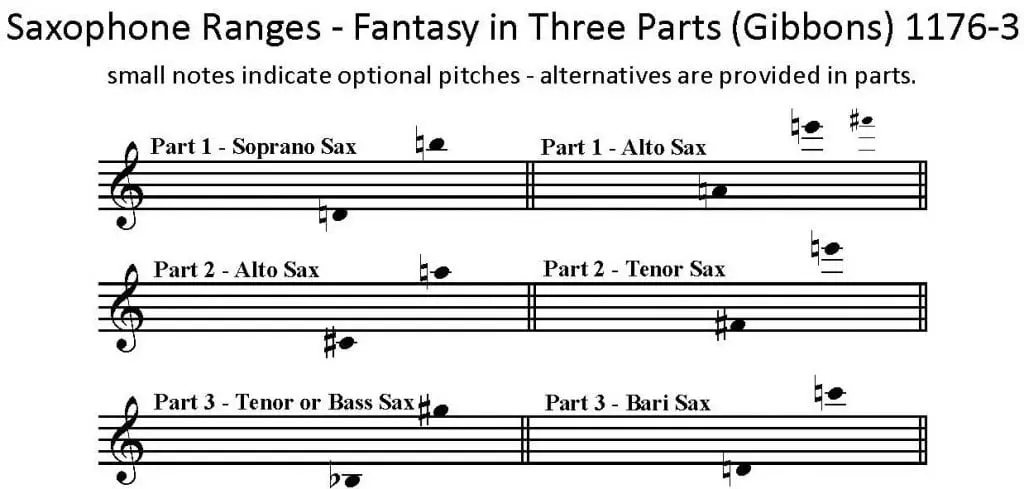
About the Composer
 Orlando Gibbons, (??December 1583 – 5 June 1625) Orlando Gibbons came from a musical family. His father William was a musician in Oxford, and his brother William played the organ in Exeter. Orlando’s musical career started at age 13, when he joined the King’s College choir. He matriculated at King’s College in 1599, received a Bachelor of Music degree from Cambridge in 1606, and Doctor of Music from Oxford in 1622.
Orlando Gibbons, (??December 1583 – 5 June 1625) Orlando Gibbons came from a musical family. His father William was a musician in Oxford, and his brother William played the organ in Exeter. Orlando’s musical career started at age 13, when he joined the King’s College choir. He matriculated at King’s College in 1599, received a Bachelor of Music degree from Cambridge in 1606, and Doctor of Music from Oxford in 1622.
Gibbons was a favorite court musician during the reign of King James I and later, King Charles . He was appointed organist for the Royal Chapel in 1605, and for Westminster Abbey in 1623. He had a hugely successful career, and found time to compose anthems, madrigals, fantasias, and dances.
There are many missing links in the historical record of Orlando Gibbons. Possibly his brother Edward had something to do with securing Orlando his first royal post. He was only 19 when he began service at the court of King James I and remained in royal service until his sudden death from a brain hemorrhage when he was in his early forties.
Often Gibbons and his music and his music are discussed under the banner ‘Tudor’. It is true that his formative training was indeed Tudor, but Gibbons was nearing the end of his teens when Elizabeth I died. More properly he should be labeled a Jacobean composer. There is much that places him in the forefront of early 17th-century musical development in England.
Gibbons wrote Anglican services, anthems, and hymn tunes; madrigals, consort songs, and keyboard music, and of course ensemble music for strings like this Fantasy although the relative paucity of music for his own instrument(s) may be a testament to his improvisatory skills. His musical style is modeled on that of William Byrd, who like Gibbons was an accomplished keyboard performer.

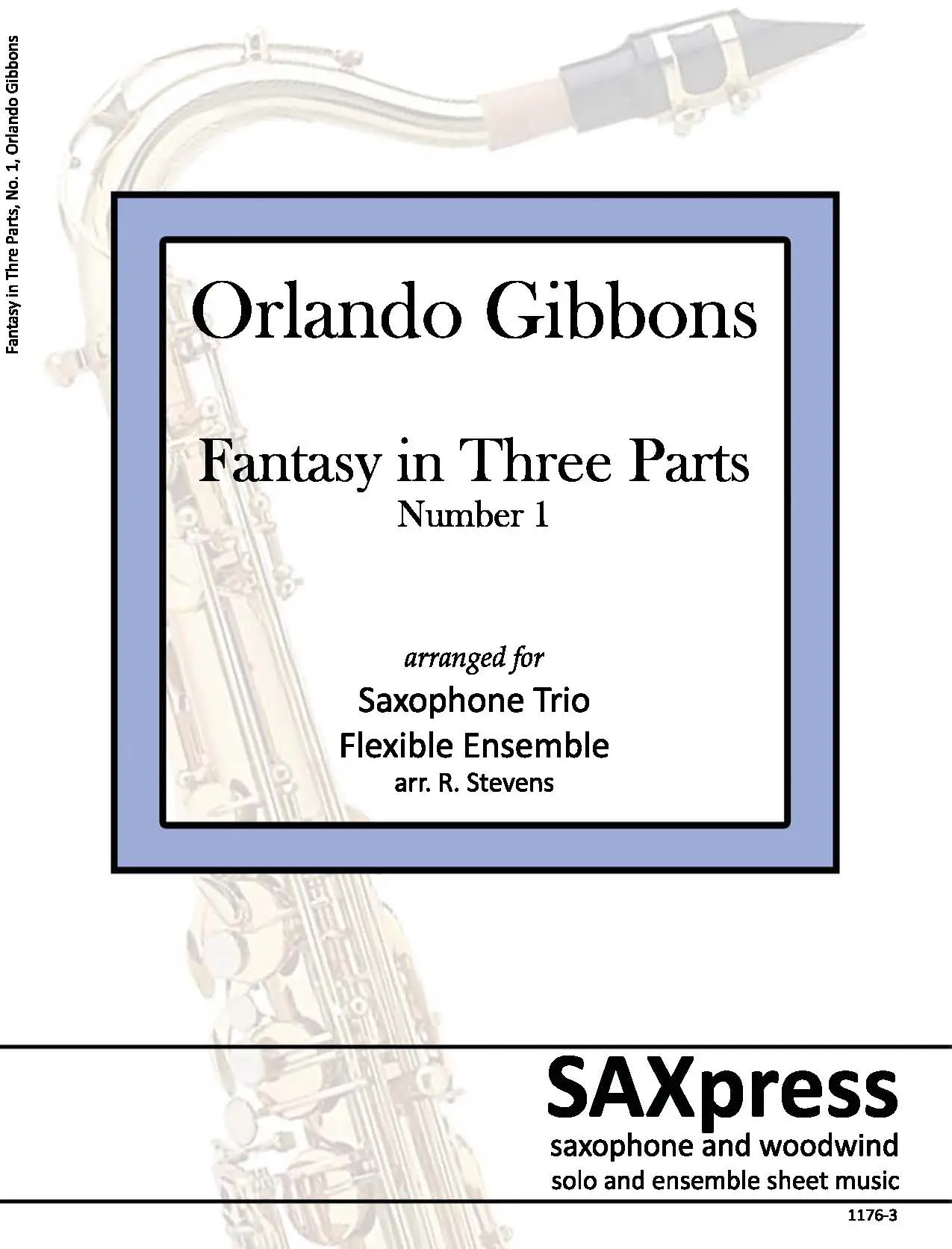
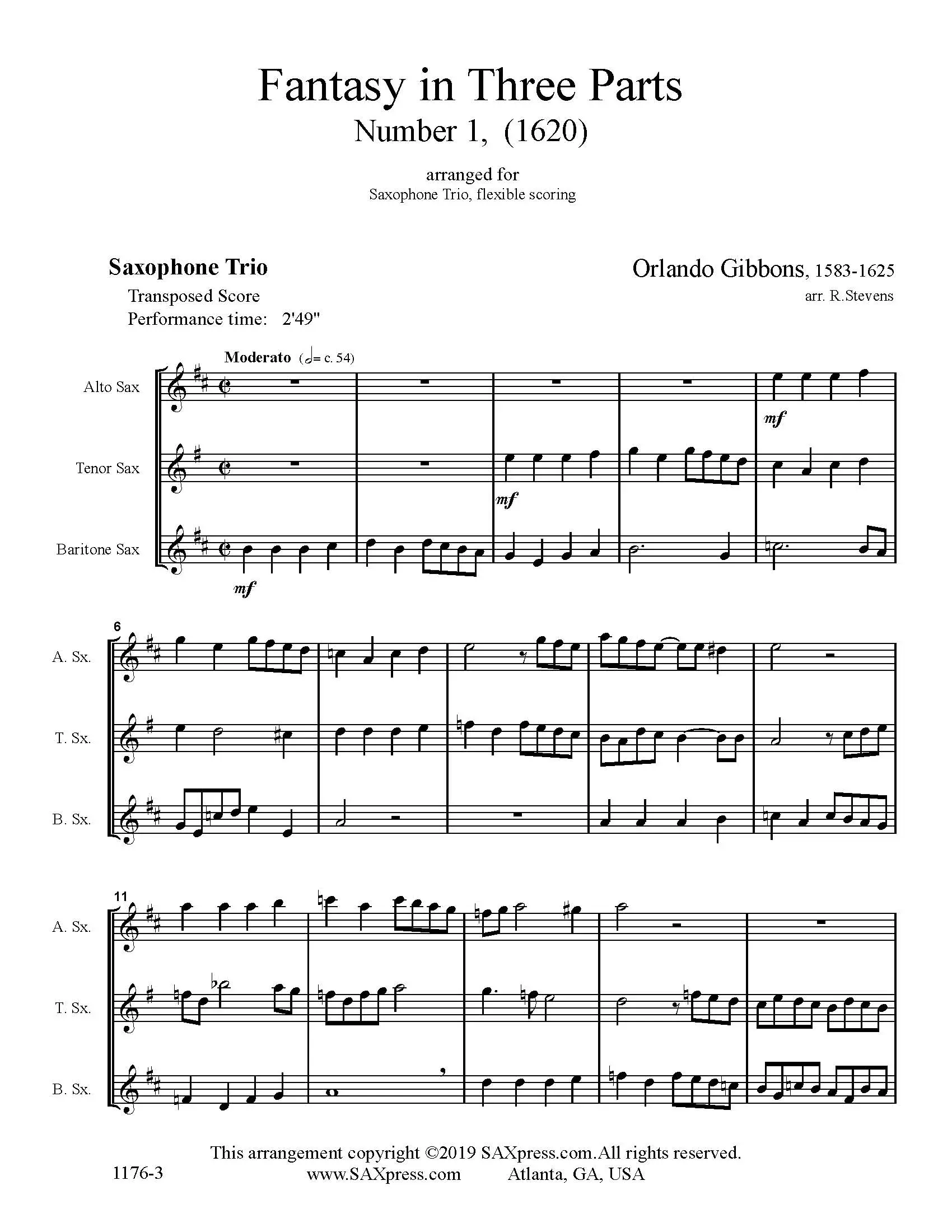
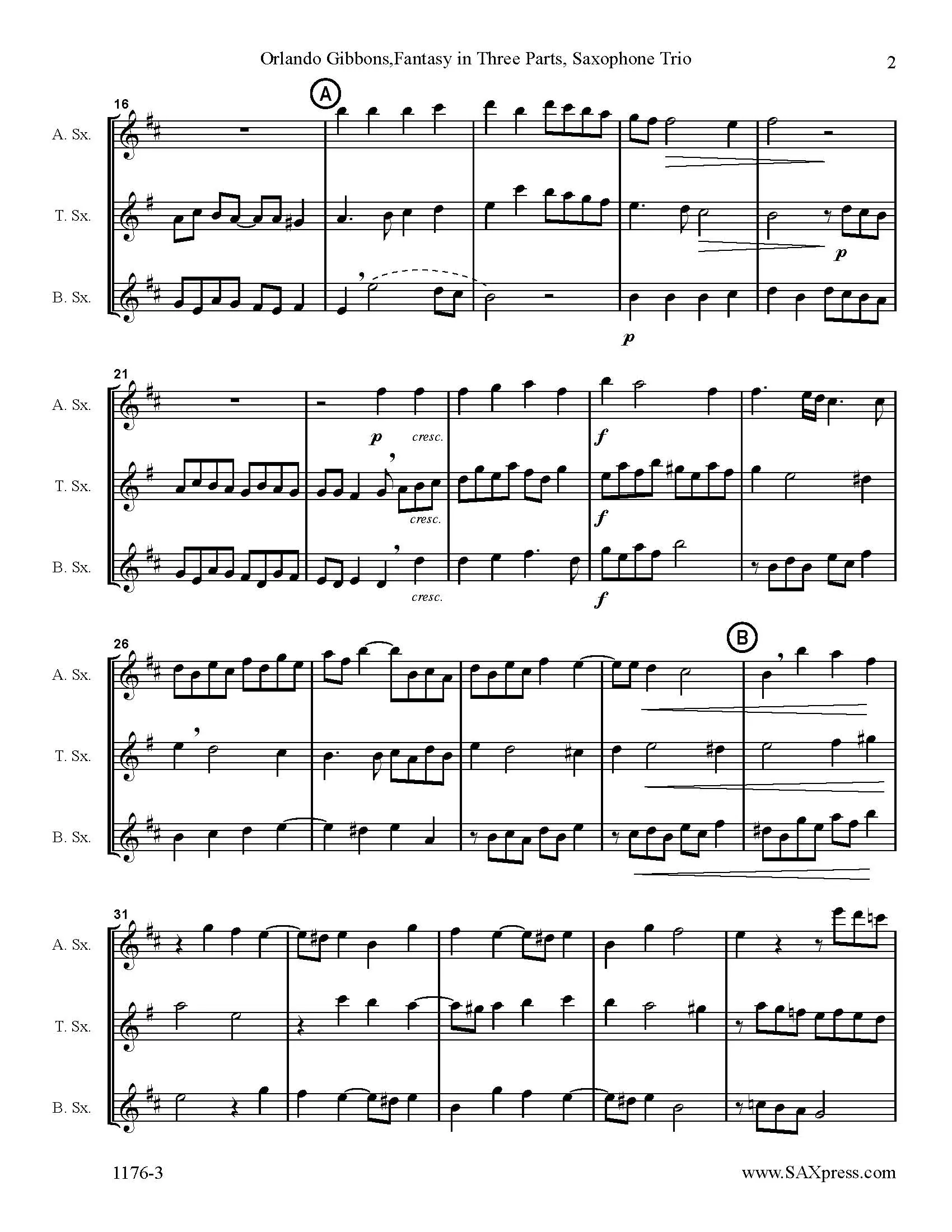
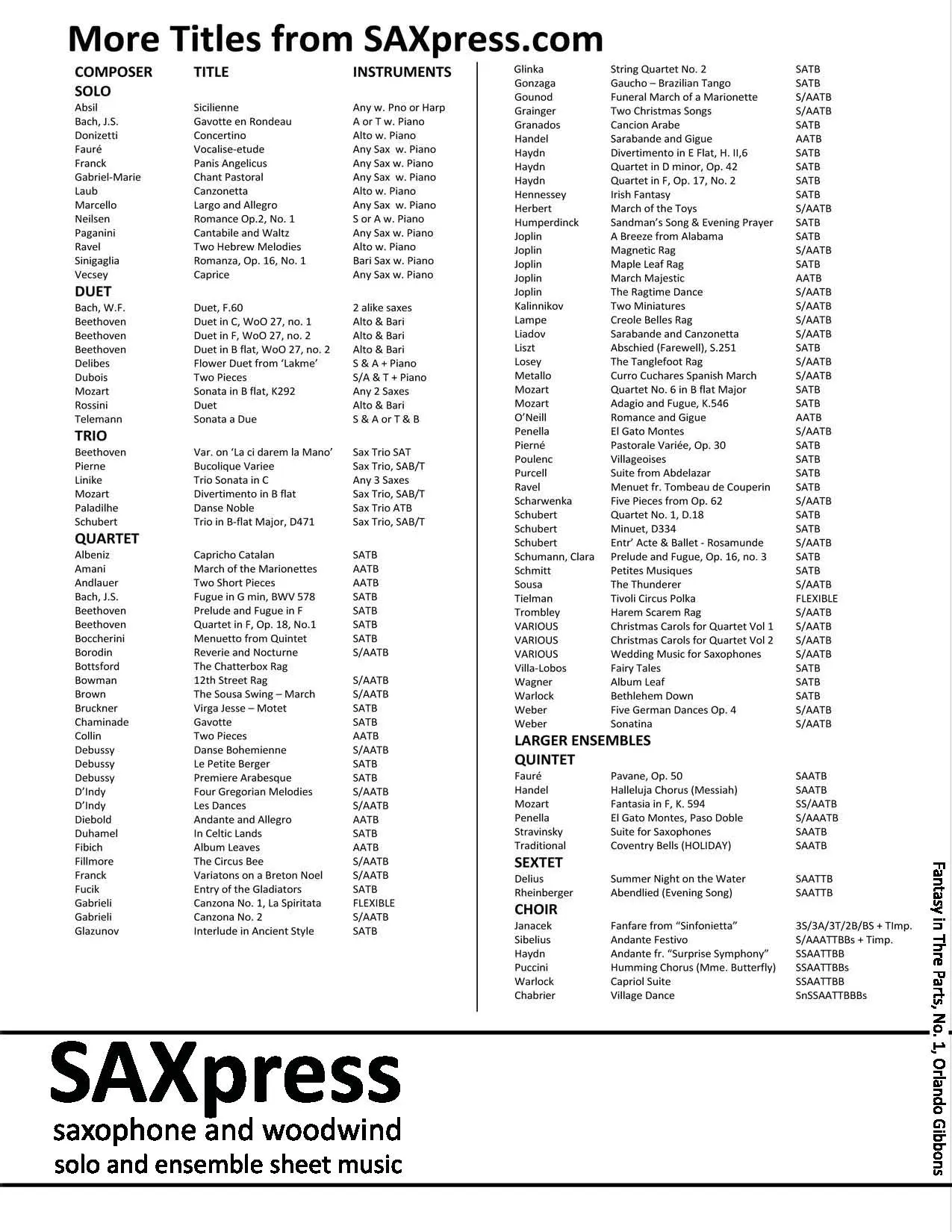
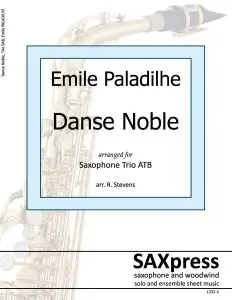
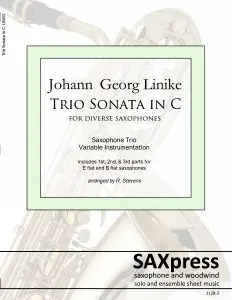
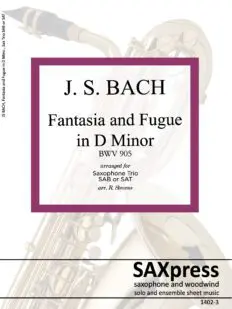
Reviews
There are no reviews yet.